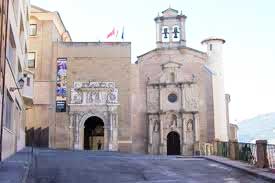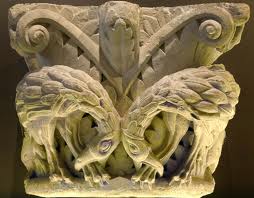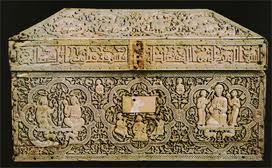Pamplona Navarra Museum

Where: Calle Santo Domingo 47, 31001
Opening hours: Tuesday to Friday from 9.30 am to 2 pm and from 5 pm to 9 pm. Weekend and holidays check with museum. Closed on Monday.
Visiting Pamplona? Visit a Pamplona travel guide to find out more activities in the city.
If you are planning going to Pamplona we recommend this and other Pamplona museums.
The Navarra Museum, founded in 1965, under the auspice of the government of Navarra, is a regional museum. It is located in the historical centre of Pamplona, in an old hospital near the city walls. Of the original building, only the facade and the church remain, both from the 16th century. The rest of the building was restored and it was inaugurated in 1990.
The pieces exhibited in the Navarra Museum are collections initiated by the Commission of Historical and Artistic Monuments of Navarra, and it includes objects from prehistory to present times, which evidence the rich heritage of the region.
The Navarra Museum also hosts temporary exhibitions, film series, conferences, guided tours and didactic activities.
The Collection
The collection is organised chronologically into the following sections:

- Prehistory: the first evidence of human presence in Navarra are from the early Paleolithic (dating back some 150,000 years), and from that time on there has been an uninterrupted occupation of the territory. During the first millennium BC, some Indo European and Hallstatt groups settled in the region and developed some sort of urban architecture, using incineration as a funerary rite. Some ten settlements have been dug up where tools, weapons and bronze and iron decorations have been found, as well as ceramic pieces associated to domestic use, to the storage of grain and mortuary rites.
Sample feature: a hand-made ceramic ritual cup dated from the Iron Age - Romanization: At the beginning of the 2nd century BC the Roman legions reached the Southern part of the 'vascones' territory and a Romanization process began to take place, through a peace treaty negotiated by Augustus and the creation of a novel infrastructure which included the creation of new roads. The cities became centres of Latin culture, which finally reached rural areas.
Sample feature: Mosaic of Bacchus' Triumph, which dates back to the 1st century AD - Incineration: the practice of incineration of the dead was widespread throughout the Roman Empire, especially during its period of splendour. The ashes would be rescued and stored in glass or mud amphoras.
Sample feature: a limestone funerary stele dated from Roman times. - Romanesque: the several routes of The Way of Saint James that converged in Navarra contributed to the development of an artform with international projection. Very few objects remain in the Navarra Museum that give us an idea of the facade of the old Romanesque Cathedral of Pamplona; however, some of the remaining capitals and the rest of the pieces are enough to warrant the claim that it was a first class building.
Sample feature: Romanesque capital from the Cathedral of Pamplona, dating back to the 12th century.

Other sections in the Navarra Museum
- Islam
- Gothic
- Renaissance
- Baroque
- 19th century
- 20th century



